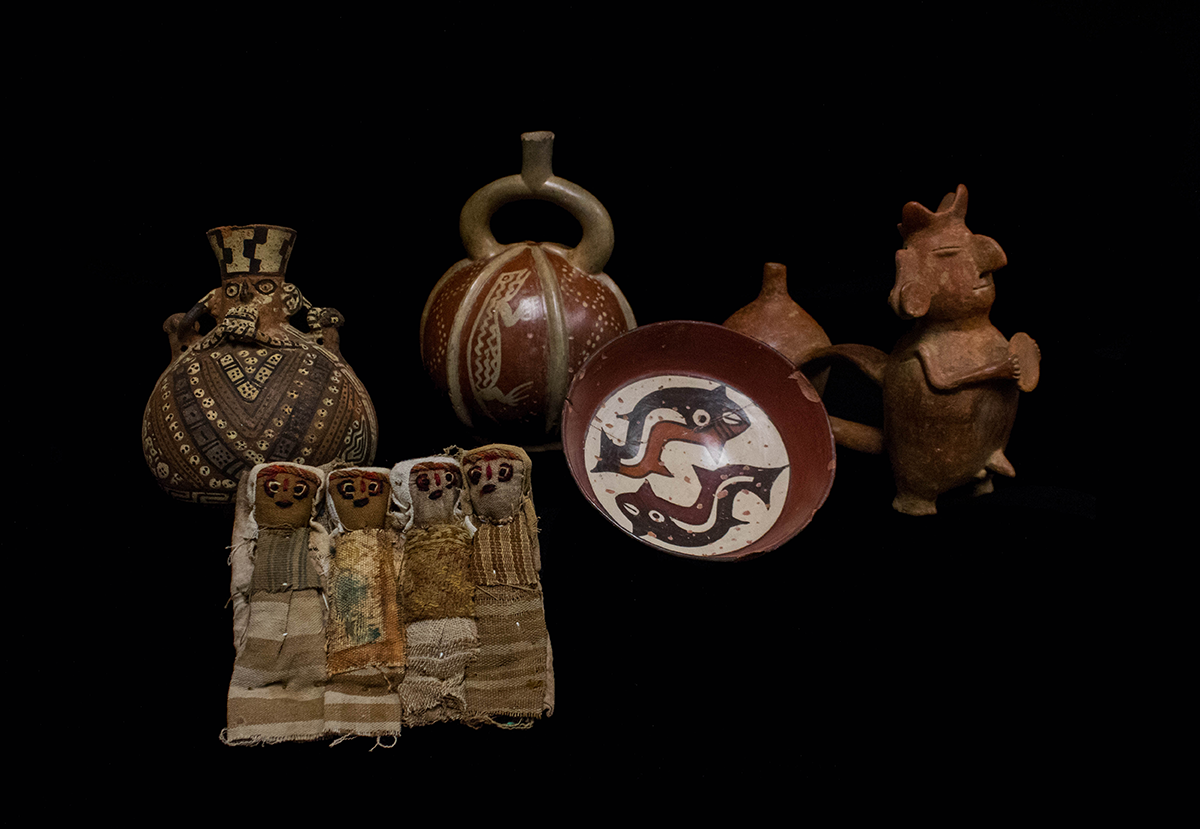by
Armando Cuellar
Robert Gudino
Jackie Venegas
The Museum of Anthropology maintains a small but significant collection of ceramics and textiles from Mesoamerica and the Andes. We selected two objects from the Andes to hilight the collection.
Nasca Bowl

The Nasca people of Peru are known for their outstanding artistic abilities. They are particularly known for artwork including elaborate ceramics and textiles. The Nasca were centered in the basin of the Rio Grande of Peru during the period of 100 BC and AD 700. There are three distinct styles of artwork associated with the three periods of Nasca civilization.
The first, or Early Nasca period is noted by its rather simplistic interpretations of individual animals, plants, and humans. The Early Nasca period pottery and textiles can also be identified by the lack of background clutter distracting the observer from the primary subject. The Middle Nasca period involved the improvement of ceramic techniques and style. Many examples of pottery from this era contain as many as 10-12 colors. The figures take on a more abstract and mythic appearance as well. The Late Nasca period utilized stylized designs with interconnected figures that occupy voids in the background that typified early Nasca art.
Vicus Whistling Bottle

These ceramic whistling bottles were produced in Peru for two thousand years. They were first produced around 500 B.C, and ending in 1532 after the Spanish conquest. The whistling bottles were made and used on the north and central coasts and highlands of Peru. The bottles were mostly used for storing liquids. The whistle was a vent for air, when filling and pouring the liquids. The bottles also could have been used as whistles in ceremonies.
Whistling bottles come in different chambers. Most bottles have two chambers, others just have one chamber. Some bottles have even four to six chambers. The whistling bottles are made of one or more chambers, which are connected by an upper bridge handle, which is where the whistle is often contained. The lower pottery tube is for the liquid or air to flow from on chamber to the other. Whistling is accomplished by air when it exits the effigy chamber through a small hole in the chamber. Water can also produce the whistle effect on the bottle. When a bottle is returned to the upright position, after a portion of its liquid is poured from the tubular spot, the remaining liquid, seeking its own level, displaces the air in the effigy chamber. This produces an air stream moving directly across the whistle opening. However, when a bottle is "sounded" in this way, the tone is barely audible.


